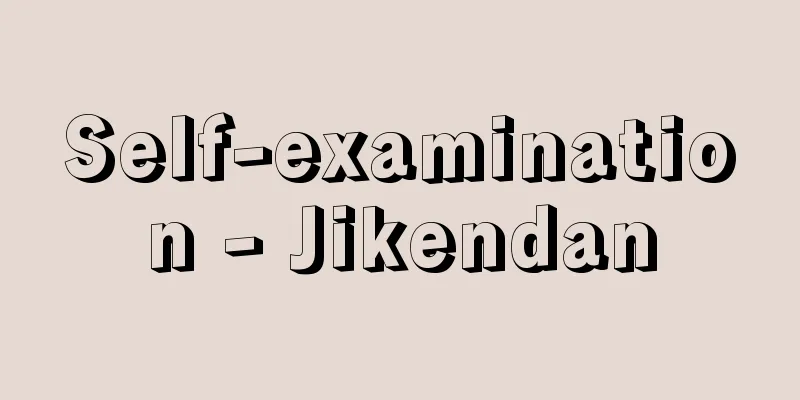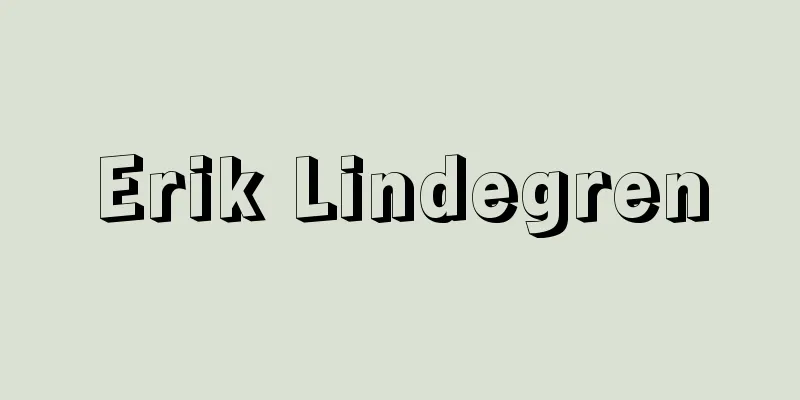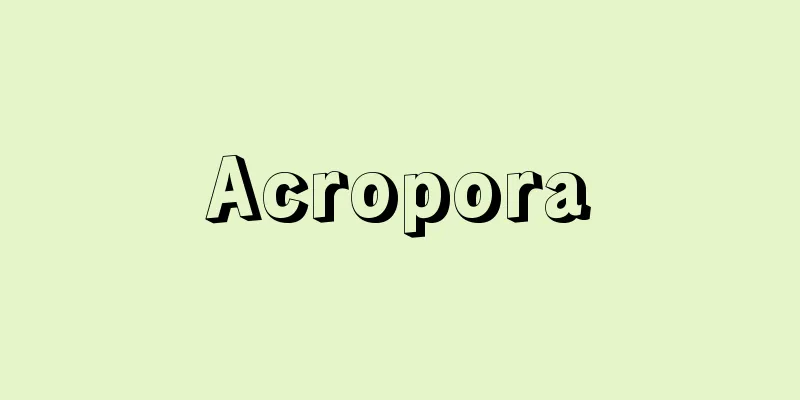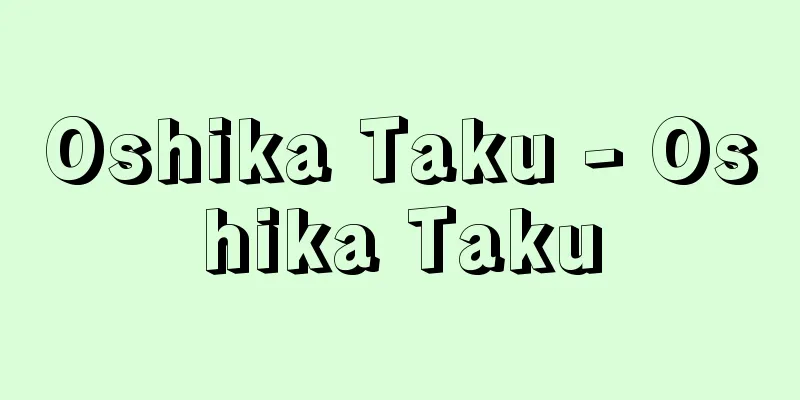Yukar - Yukara

|
It is one of the Ainu oral literary arts, and the word yùkar, meaning "to imitate," came to mean telling a story of experience, and has also become a general term for lyrics and music. It is told in atomte-itak (ornamented language) rather than the everyday language yayan-itak (ordinary language). The words of oracles from when shamanism was alive in Ainu society became shaman songs (fuyo), and developed into yukar. Since it was based on the oracles of the gods, it was told in the first person, with narrations such as "I am... I am...", but once it was established as a form, third person narrations also began to be seen. All are based on oral tradition, but with each passing time, the story changes due to the personality and skill of the teller, except for the story and clichés. [Haginaka Mie] Yukar of the GodsThe gods that appear in yukar are diverse, some of them important to the Ainu, while others are defeated by human wisdom and retreat. These are relatively short stories in which the gods relate their own experiences, and are characterized by refrains. There are stories about nature gods such as fire and wind, animal and plant gods such as the Blakiston's Fish Owl and Katsura, fetish gods such as the mortar and boat, and gods who are said to be the ancestors of mankind. The former "Yukara of the Nature Gods" are more varied than the latter "Yukara of the Human Gods," and each story has its own song and there are many more of them. Some of the refrains are meaningful, for example, "All around, silver drops fall, all around, gold drops fall" is taken from the scene in the story where the Blakiston's Fish Owl, the god in charge of the village, dances while singing this song. Others are expressed using the voice or sound of the narrator, and the narration progresses rhythmically. When the introduction of the yukar of human gods is written down, it resembles "human yukar," but it can be distinguished by the way the story develops from there and the style of narration. There is a custom of calling the yukar of nature gods kamuy-yukar and the yukar of human gods oyna, but this is the way of calling them in regions where there were relatively many records and written accounts, and in many regions oyna refers to the yukar of nature gods, and there are many names such as sakoraw and makyuukara, so it is not uniform. [Haginaka Mie] Human YukarHuman Yukara heroes are raised with great care on stilts in the castle. They are most often raised by an older sister, followed by an older brother, and sometimes by an uncle or aunt, but they are not blood relatives. The hero's real name is not revealed, and he is called by the name of the place where he lives, with pon, meaning young or child, and kur, meaning god or person, added. If he is in Sinutapka, he is called pon-sinutapka-un-kur (one who lives in young Sinutapka), and if he is in Otasut, he is called pon-otasut-un-kur, and he is also known by another name, pon-ya-un-pe (one who lives on the small land). The content of the stories is more or less the same, beginning with an explanation of who is raising the hero, then moving on to a description of the inside of the castle and describing his growth. The plot changes when the protagonist reaches adulthood, leaving the castle for some reason, experiencing things outside, and returning to the castle. The hero, who excels in shamanism and has supernatural powers, wins endless battles and is loved by beautiful women. This is why the story is called a heroic tale, but there are also cases where the heroine is a woman. During the Edo period, it was called "Ezo Joruri," but after it was discovered by Kindaichi Kyosuke, the term "yukar" came to refer to "human yukar," taking the name given to the places where it was recorded (Iburi and the Saru region of Hidaka). Other names for human yukar include sa-kor-pe, yayerap, and haw, and some are so long that they can be as short as 2,000 to 3,000 lines, and even take an entire night to finish. The hauki of Karafuto (Sakhalin) recite while lying on their backs, and according to ancient documents, this method was once used in Hokkaido as well. From the end of the Edo period, both performers and listeners would strike the fireplace or floor with a stick called a rep-ni to keep rhythm, and when it came to battle scenes, the performers' voices, the listeners' hetche (shouts from the listeners) and the rep-ni would intertwine intensely, and when it came to love stories, a thin female voice would join in. There are many repetitions of cliché phrases, but the skillful combination of certain known vocabulary makes the stories even more mystical. The yukar told on snowy nights during festivals has also undergone many transformations, and there are now only a few people who can tell them in their traditional form. [Haginaka Mie] "The Ainu Epic Poem Yukarshu, written by Kanenari Matsu and translated and annotated by Kindaichi Kyosuke, 9 volumes (1959-75, Sanseido)" ▽ "Kindaichi Kyosuke, Studies on the Ainu Epic Poem Yukar, 2 volumes (1931/reprinted in 1967, Toyo Bunko)" ▽ "Ainu Mythical Tales, edited and translated by Chiri Yukie (Iwanami Bunko)" ▽ "Chiri Mashiho Collected Works 1 and 2 (1973, Heibonsha)" ▽ "Studies on the Ainu Epic Mythical Tales and Sacred Traditions, edited by Kubodera Itsuhiko (1977, Iwanami Shoten)" ▽ "An Invitation to Ainu Literature Yukar, written by Haginaka Mie (1980, Hokkaido Publishing Planning Center)" ▽ "Kamuy Yukar and Folktales, written by Kayano Shigeru (1988, Shogakukan)" Source: Shogakukan Encyclopedia Nipponica About Encyclopedia Nipponica Information | Legend |
|
アイヌの口承文芸の一つで、「まねる」という意味のユカラyùkarから体験を物語る意味になり、詞曲の総称にもなった。日常語のヤヤンイタクyayan-itak(普通のことば)でなくアトムテイタクatomte-itak(飾られたことば)で語る。アイヌの社会にシャーマニズムが生きていたころの託宣のことばが、巫謡(ふよう)となり、ユーカラへと発達した。神の託宣を母体にしたので「私は……、私は……」と、第一人称説述体で語られていたが、一つの形態として確立してからは第三人称叙述体のものもみられるようになった。すべて口碑伝承によるが、回を重ねるごとに伝承者自身の人柄や巧拙などの影響でストーリーと常套句(じょうとうく)を除いて変化していく。 [萩中美枝] 神々のユーカラユーカラに現れる神は多様で、アイヌにとって重要な神もあれば人間の知恵に負けて引き下がる神もいる。これらの神々が自分の体験を語る形式をとる比較的短編の物語で、折返し(リフレイン)がつくのが特徴である。火・風などの自然神、シマフクロウ・桂(かつら)などの動・植物神、臼(うす)・舟などの物神の物語と、人間の始祖とされる神の語るものがあり、前者の「自然神のユーカラ」のほうが後者の「人文神のユーカラ」よりも変化に富み、一編一編に曲がついていて数も多い。折返しも意味のあるものがみられ、たとえば「銀のしずく降る降るまわりに、金のしずく降る降るまわりに」という折返しは、村をつかさどる神のシマフクロウが物語のなかでこの歌を歌いながら舞う情景からとっている。ほかにも語る神の声や音で表すこともあり、リズミカルに語り進む。人文神のユーカラは導入部を文字にすると「人間のユーカラ」に似ているが、それ以降の物語の展開の仕方、語り口などで判別できる。自然神のユーカラをカムイユーカラkamuy-yukar、人文神のユーカラをオイナoynaとよぶ習慣があるが、採録・文字化されたものが比較的多かった地方の呼称法で、オイナといえば自然神のユーカラをさす地方も多く、サコラウ、マッユーカラなど多くの名称もあって一様ではない。 [萩中美枝] 人間のユーカラ人間のユーカラのヒーローは城の高床の上でたいせつに育てられている。育てるのは姉がもっとも多く、ついで兄、おじ・おばのこともあるが血縁ではない。ヒーローの実名も伝えず、住んでいる土地の名に、幼い、若いという意味のポンponと、神や人の意味を表すクル-kurをつけてよぶ。シヌタプカにいればポンシヌタプカウンクルpon-sinutapka-un-kur(若いシヌタプカにいるひと)、オタスッならポンオタストゥンクルpon-otasut-un-kurで、ポイヤンペpon-ya-un-pe(小さい陸地びと)という別名もみられる。物語の内容は大同小異で、冒頭にヒーローがだれに育てられているかの説明があって城の中の描写に移り、成長していくようすが語られる。成人に達しようとするころから筋書きが変わり、なにかの理由で城を出て、外での体験を経て城に帰るまでの物語で、巫術(ふじゅつ)に優れ超能力をもっているヒーローは際限なく戦いにも勝ち、美しい女に恋されることもある。英雄詞曲とよばれるゆえんだが、女性がヒロインとなる場合もある。 江戸時代には「蝦夷浄瑠璃(えぞじょうるり)」などといわれたが、金田一京助によって明らかにされ、その採録先〔胆振(いぶり)と日高の沙流(さる)地方〕の呼称法をとってユーカラといえば「人間のユーカラ」のことをさすようになった。ほかにサコロベsa-kor-pe、ヤィェラプyayerap、ハウhawなどの名称がある人間のユーカラは、短くても2000~3000行、一晩語り明かしても終わらないほど長大なものもあった。樺太(からふと)(サハリン)のハウキhawkiはあおむけに寝ながら語るが、古文献によると北海道でもかつてはその方法がとられたらしい。江戸末期からは演者も聞き手もレプニrep-niという棒で炉縁(ろぶち)や床(ゆか)を打ちながら調子をとり、戦闘の場面になると、演者の声と聞き手のヘッチェhetche(聞き手の掛け声)とレプニが激しく交錯し、愛の語りになると細い女声がそれに和する。常套句の反復が多いが、かえって一定の既知の語彙(ごい)の巧みな組合せが物語をより神秘的にさせる。祭りのなか、雪の夜に語られたユーカラも変容を重ね、従来の姿で語れる人は数えるほどになった。 [萩中美枝] 『金成まつ筆録、金田一京助訳注『アイヌ叙事詩ユーカラ集』全9巻(1959~75・三省堂)』▽『金田一京助著『アイヌ叙事詩ユーカラの研究』全2冊(1931/再版・1967・東洋文庫)』▽『知里幸恵編訳『アイヌ神謡集』(岩波文庫)』▽『『知里真志保著作集1・2』(1973・平凡社)』▽『久保寺逸彦編著『アイヌ叙事詩神謡・聖伝の研究』(1977・岩波書店)』▽『萩中美枝著『アイヌの文学ユーカラへの招待』(1980・北海道出版企画センター)』▽『萱野茂著『カムイユカラと昔話』(1988・小学館)』 出典 小学館 日本大百科全書(ニッポニカ)日本大百科全書(ニッポニカ)について 情報 | 凡例 |
<<: Eucalyptus globulus; blue gum
Recommend
α-Hydroxypropionic acid
...The chemical formula is CH 3 CH(OH)COOH. It is...
Narutaki waterfall
A district in Ukyo Ward, on the western outskirts...
Asturias Bird - Asturias Bird
…A city and region in northern Iran. It was calle...
Grinevskii
…Russian and Soviet writer. Green was a pen name;...
Shizuna Kusano - Kusano Shizuna
...A powerful samurai family in Hizen and Chikugo...
Hedai (silver bream) - Hedai (English spelling)
A marine fish of the family Sparidae in the order ...
Myopic astigmatism
…If both are myopic, it is called myopic compound...
Rain Master - Cow
〘Noun〙 God of rain. God in charge of rain. ※Ryouns...
Verbena rigida (English spelling)
… [Munemin Yanagi]. … *Some of the terminology th...
Ethyl vanillin
...(3)Other methods use eugenol or safrole as raw...
Fontana, Carlo
Born: 1638. Burchiate Died February 5, 1714. Rome....
Durchimitation
…In the 16th century, the equalization of voices ...
Archaic smile
A smile-like expression seen on the mouth of Greek...
Chogin - Chogin
Silver coins from the Edo period. Weighted curren...
Energy quantum
When the energy of a mechanical system is an inte...







![Hojo [town] - Hojo](/upload/images/67ccd37c08794.webp)

